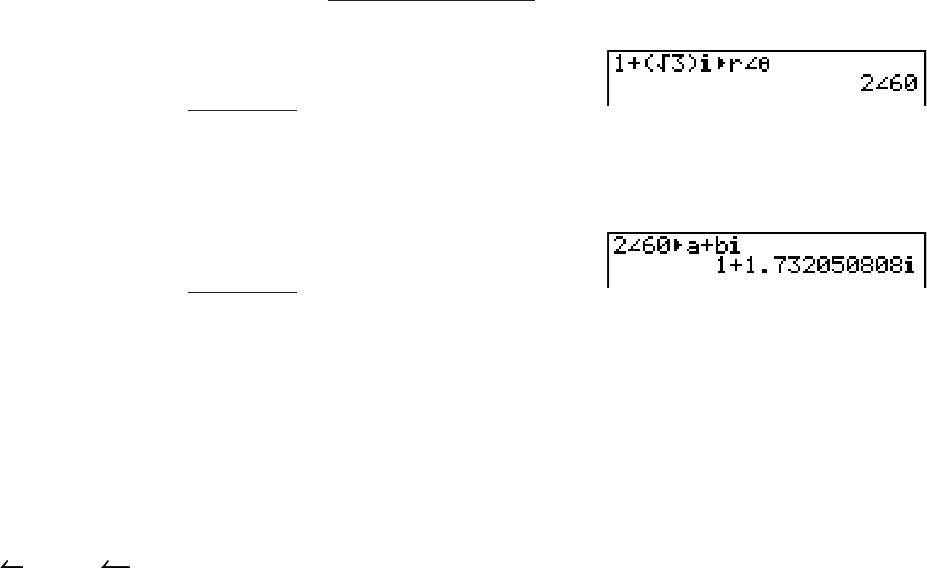
2-33
Example To transform the rectangular form of complex number 1 + 3 i to its
polar form
K(SET UP)AAAAAA*
(Deg)A(
a+bi))
@V()B
*(CPLX)**(
i)(E)(r
Q
)U
* fx-7400G
II, fx-9750GII: AAAAA
** fx-7400G
II: (CPLX)
AT()E?
*(CPLX)*(E)(
a+bi)U
* fx-7400G
II: (CPLX)
• The input/output range of complex numbers is normally 10 digits for the mantissa and two
digits for the exponent.
• When a complex number has more than 21 digits, the real part and imaginary part are
displayed on separate lines.
• The following functions can be used with complex numbers.
,
x
2
, x
–1
, ^(x
y
),
3
,
x
, In, log, log
a
b, 10
x
, e
x
, Int, Frac, Rnd, Intg, RndFix(, Fix, Sci, ENG,
ENG, ° ’ ”,
° ’ ”
,
a
b
/c, d/c
7. Binary, Octal, Decimal, and Hexadecimal
Calculations with Integers
You can use the RUN•MAT (or RUN) mode and binary, octal, decimal, and hexadecimal
settings to perform calculations that involve binary, octal, decimal and hexadecimal values. You
can also convert between number systems and perform bitwise operations.
• You cannot use scientific functions in binary, octal, decimal, and hexadecimal calculations.
• You can use only integers in binary, octal, decimal, and hexadecimal calculations, which
means that fractional values are not allowed. If you input a value that includes a decimal part,
the calculator automatically cuts off the decimal part.
• If you attempt to enter a value that is invalid for the number system (binary, octal, decimal,
hexadecimal) you are using, the calculator displays an error message. The following shows
the numerals that can be used in each number system.
Binary: 0, 1
Octal: 0, 1, 2, 3, 4, 5, 6, 7
Decimal: 0, 1, 2, 3, 4, 5, 6, 7, 8, 9
Hexadecimal: 0, 1, 2, 3, 4, 5, 6, 7, 8, 9, A, B, C, D, E, F
• Negative binary, octal, and hexadecimal values are produced using the two’s complement of
the original value.
• The following are the display capacities for each of the number systems.


















